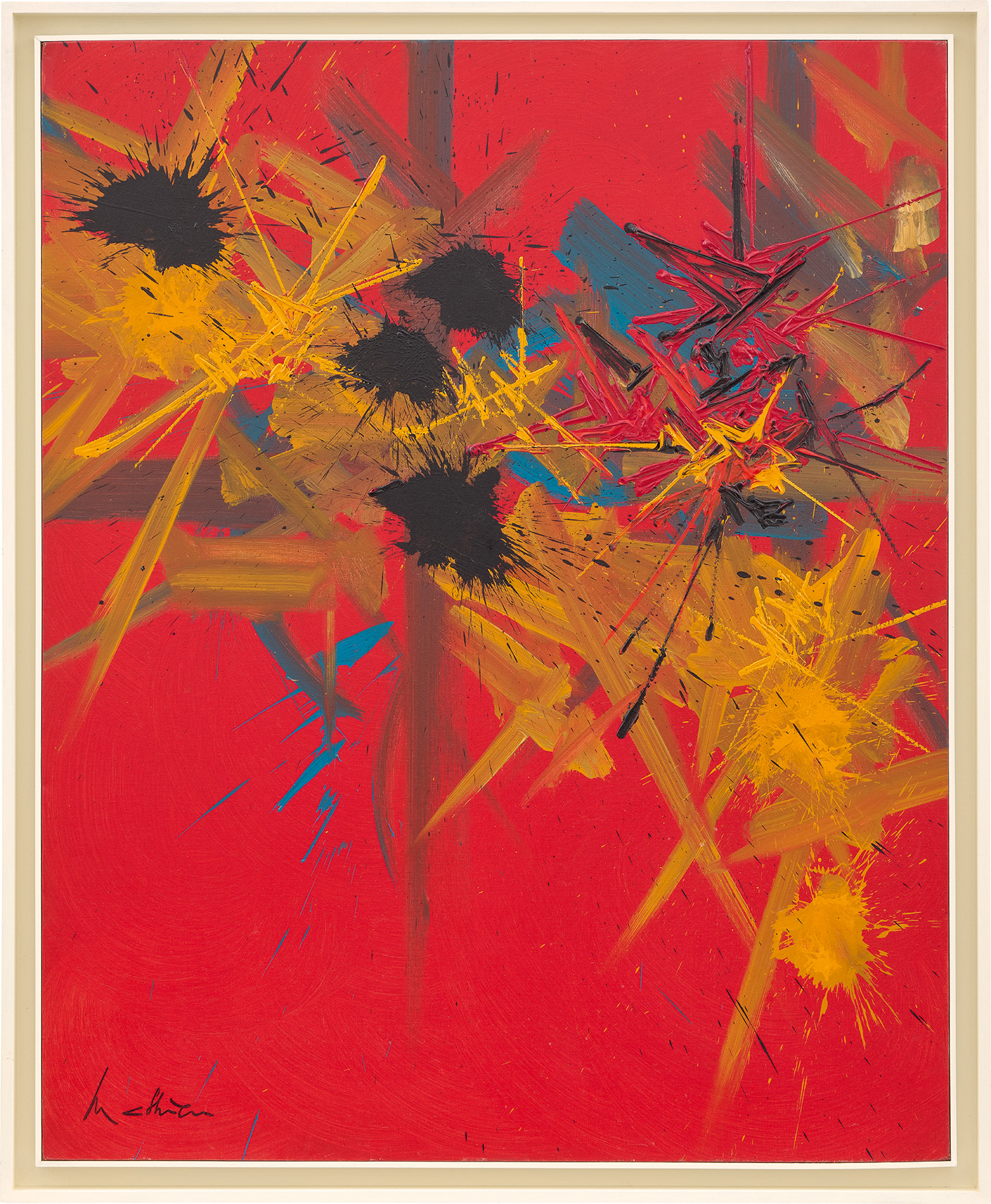





197
Georges Mathieu
Creux Amers (Bitter Hollows)
signed 'Mathieu' lower left; titled "CREUX AMERS" on the stretcher
oil on canvas
100 x 81 cm. (39 3/8 x 31 7/8 in.)
Painted in 1985, this work is accompanied by a certificate of authenticity issued by the Comité Georges Mathieu.